No other name is more synonymous with Barcelona more than Antoni Gaudi. Whether it is his unique and distinct architectural style, great influence his work left on the city or his ties to deeply rooted Catalan national pride, Gaudi is Barcelona and Barcelona is Gaudi. So take some time and enjoy his masterpieces, those that are famous and those that are less so. You will be rewarded with beautiful memories and pictures that will wow your friends.
To create perfect Gaudi’s Barcelona itinerary, first decide which of his buildings interests you the most. Than, map them out and decide if you will walk, use public transportation or use uber or taxi. Finally, get tickets in advance. In Barcelona I highly recommend mobile app TICKETS (>Click Here). It offers “skip-the-line” tickets right on you cell phone. I love it. I recommend ending your day at Park Guell for dramatic views of Barcelona during a sunset.
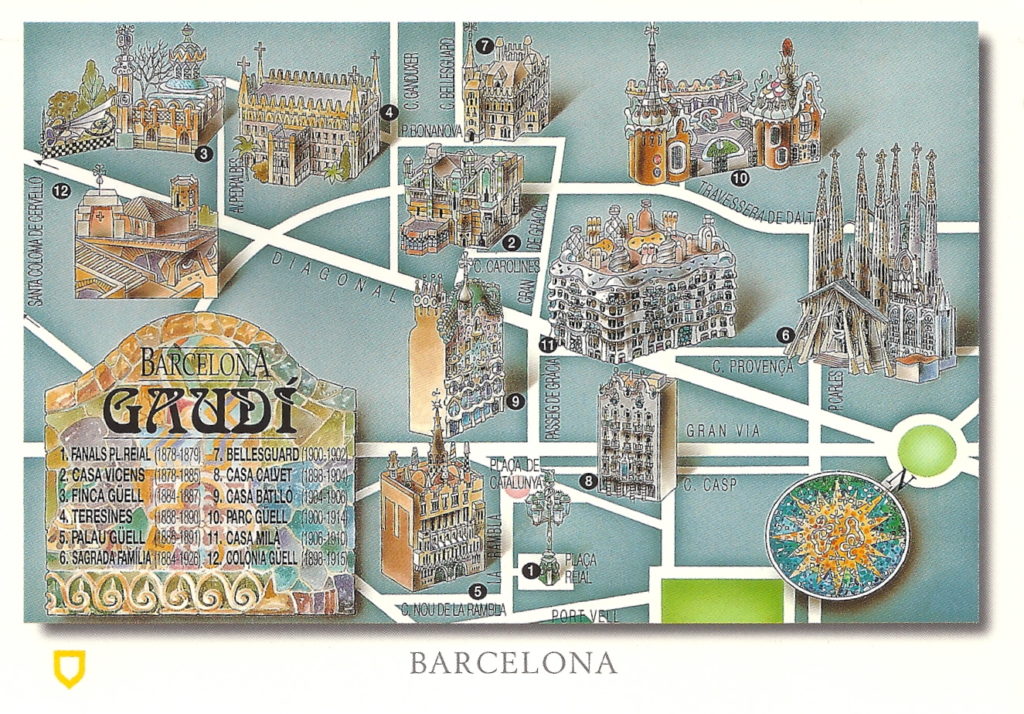
Gaudi-map

Sagrada-Familia
As for lunch, there are plenty of great options through the city, but my favorite is one of the outdoor spots with the view of Sagrada Familia. It is touristy and prices usually reflect that, but the view can not be beat. Now let us discover Gaudi’s Barcelona together, so you can plan your perfect day enjoying his masterpieces.
Getting to know Gaudi
The Catalan Antoni Gaudi (1852-1926) who nowadays is considered as one of Spain’s most renown architects, was not immediately seen as such. When graduating from the Barcelona School of Higher Architecture in 1878, his skills were still questioned by his professors. Soon after graduating he became more known for his modernist style though. Gaudi fairly quickly received commissions to design some of the constructions we nowadays recognize as the most important structures of modernist Barcelona, or what others refer to as Catalan art nouveau.
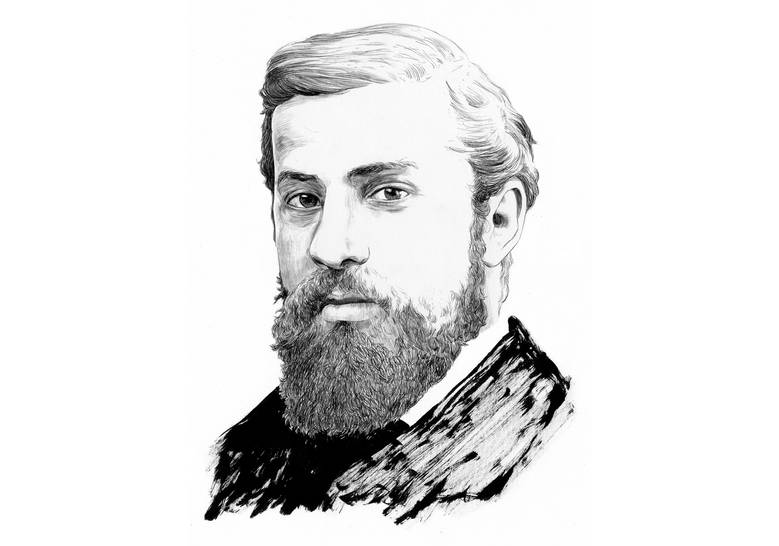
Antoni-Gaudi
Contrary to the Art Nouveau movement in the rest of Europe, in Barcelona Modernism found its origin more in nationalistic pride than in anything else. In an economic climate, where the rest of Spain was suffering stagnation , Barcelona was still thriving. The wealthy local upper-class wanted to promote the Renaixanca, the revival of Catalan traditions and the national culture. As a natural effect, the preference for local artists was strong. This was likely also one of the reasons Gaudi quickly received important assignments throughout city.
Although Gaudi is seen as the main figure in the Catalan Modernism, his style went way further than that. Gaudi often found his inspiration in the geometric forms he encountered in nature, applying these into his architecture.
Notice lack of straight lines and right angles in his works, as they do not occur in nature.
La Sagrada Familia
There are likely few other unfinished constructions around the world as famous as La Sagrada Familia, which unusually also got assigned a UNESCO World Heritage status already before its completion. The architect has now been dead for over ninety years and the cathedral has been a work in progress ever since.
At the foundation of the construction of the Basílica i Temple Expiatori de la Sagrada Família
(translated as the Basilica and Expiatory Church of the Holy Family) lays the idea of the bookseller Josep Maria Bocabella, founder of Asociación Espiritual de Devotos de San José.
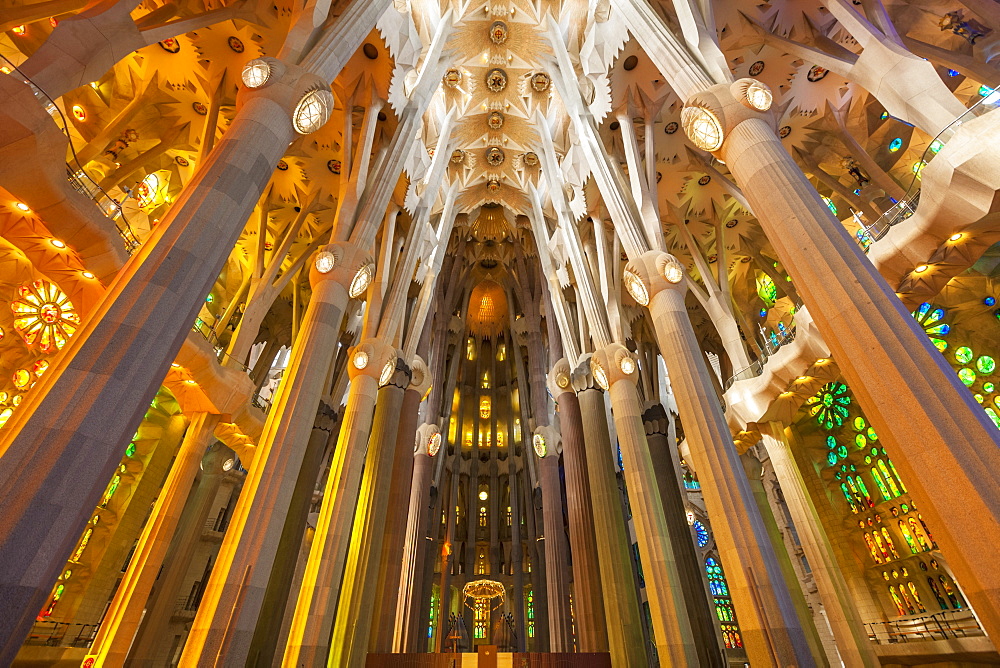
La Sagrada Familia church, basilica interior with stained glass windows by Antoni Gaudi, UNESCO World Heritage Site, Barcelona, Catalonia (Catalunya), Spain, Europe
His idea was to build an expiatory church fully devoted to the Holy Family. Through generous donations the building of La Sagrada Familia commenced in 1882 initially under the architect Francisco de Paula del Villar. Soon after the start – in 1883 – he was replaced by Gaudi who never let go of the project until his death in 1926.
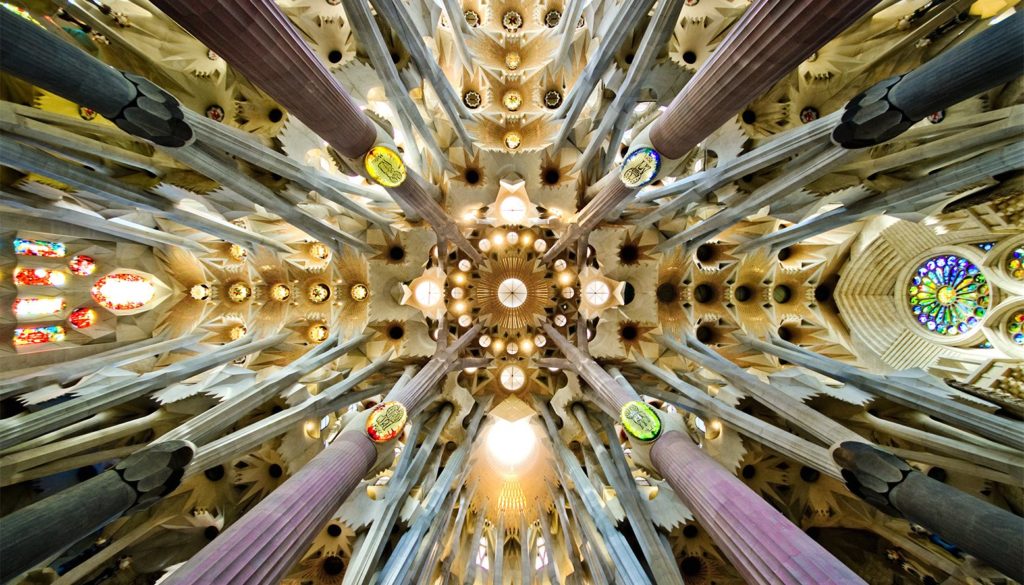
barcelona-la-sagrada-familia-ceiling-gaudi
Anticipating that he would not be able to finish the construction of La Sagrada Familia during his life Gaudi already designed the construction of the church in phases. In this way every generation would have a goal to finish one part. At the moment of his death only about a quarter of the church was finished.
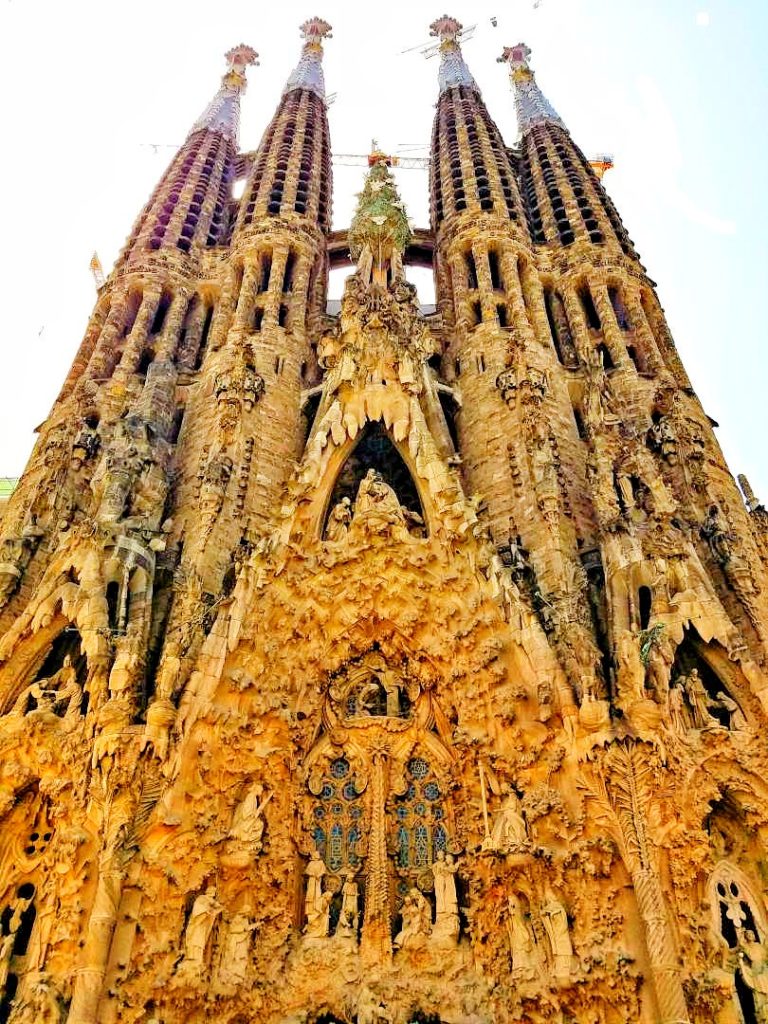
Sagrada-Familia-Exterior
Some unfortunate incidents, such as the Spanish Civil War and lack of funds, almost caused the church never to be finished. Fortunately thanks to a large number of well-trained architects and private donations the work on the church continues up to date.
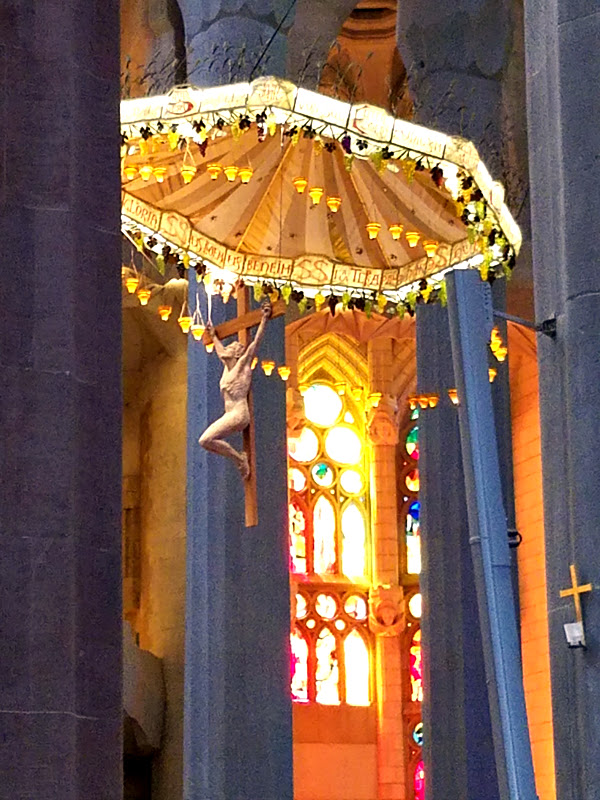
Sagrada-Familia-Altar
These days the progress of the construction goes even a bit more quickly, thanks to the computer-aided design technology applied in the construction works. The church is said to be finished in between 2026 and 2030.
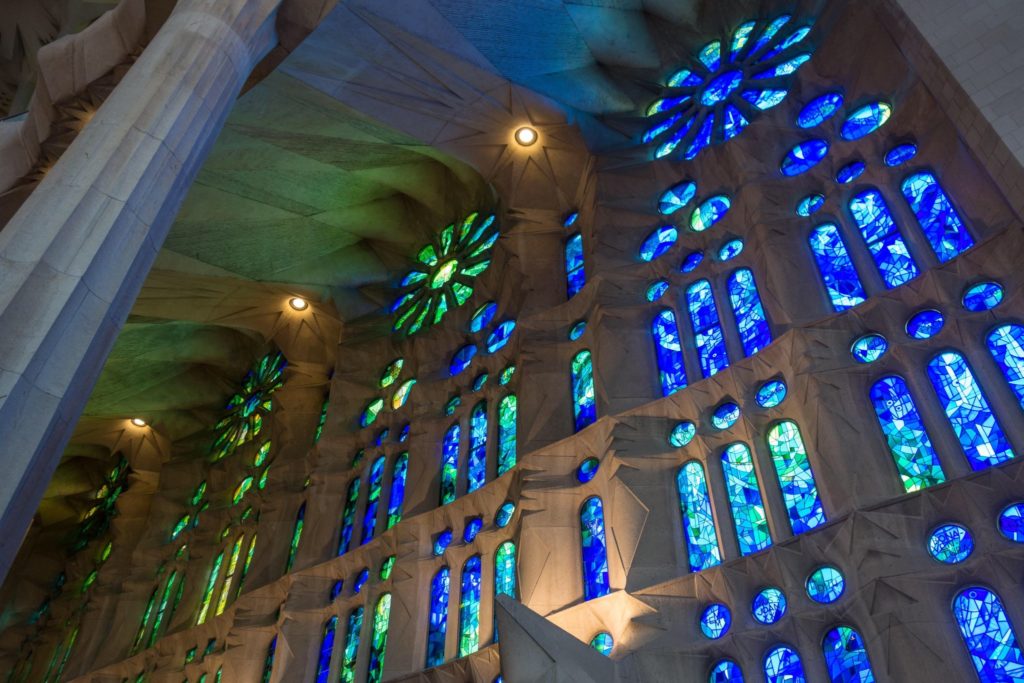
stained-glass-basilica-sagrada-familia-barcelona-spain-april-designed-antoni-gaudi-april
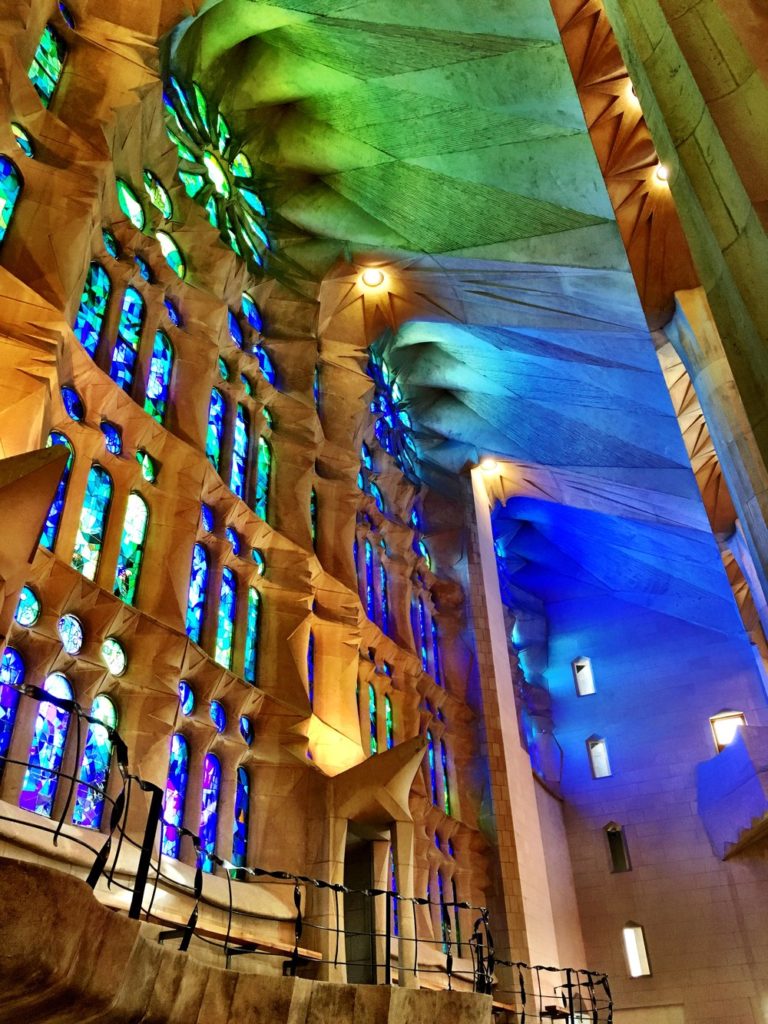
green-blue
While seeing La Sagrada Familia itself from the outside is already a treat for the eye (make sure to walk around it), entering the church for a closer look is must. I have visited this place 3 times over past 25 years and my visits are continuously exciting due to the progress made.
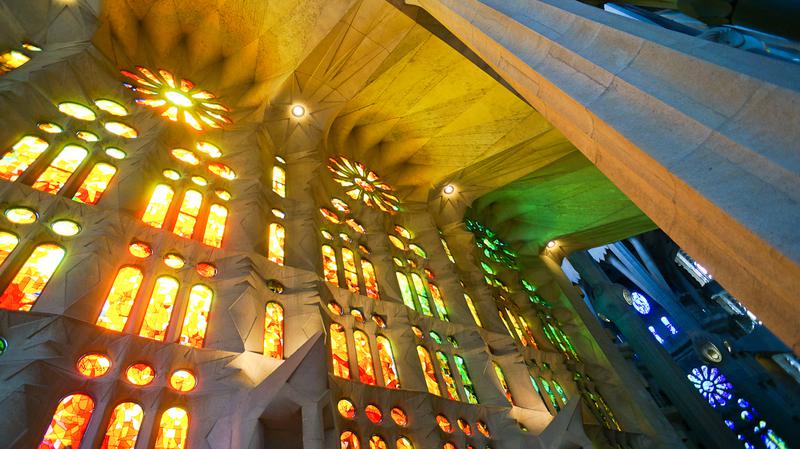
stained-glass-basilica-sagrada-familia-barcelona-spain-april-
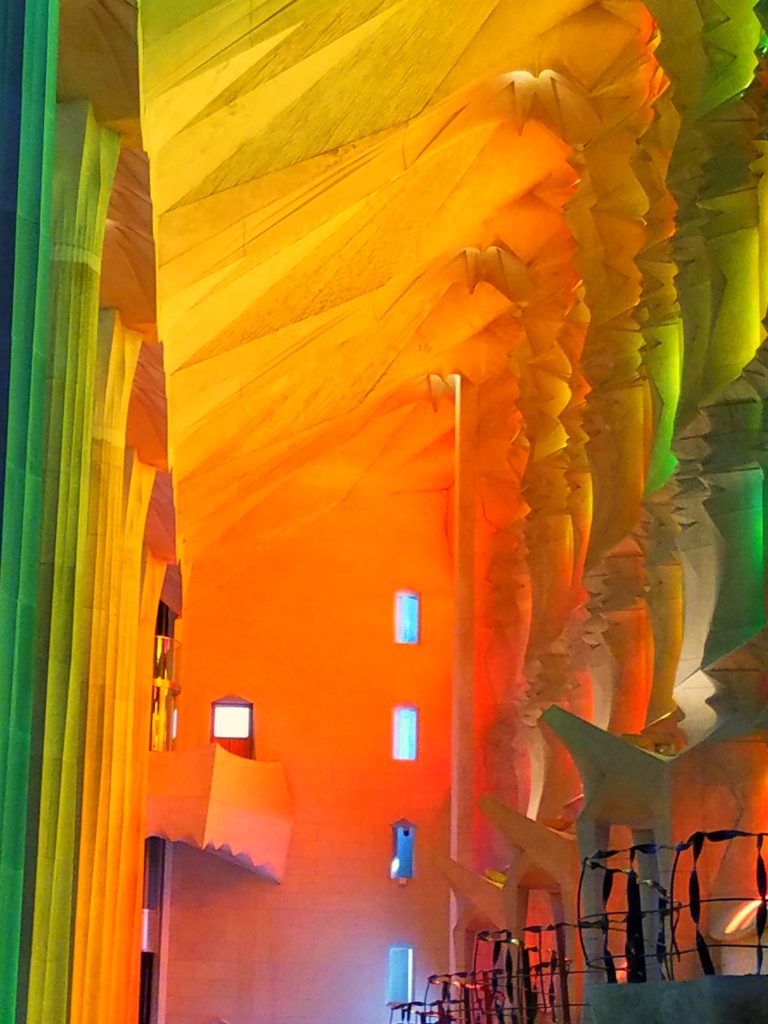
orange-red
During this visit I was able to walk around the inside of the church take in all the stain glass and detailed wall and ceiling designs. Take your time. Notice the details. Make sure you stand on the side of the main stained glass windows and enjoy the light show provided by the sun. To think that this was envisioned over 100 years ago!!! Amazing!!
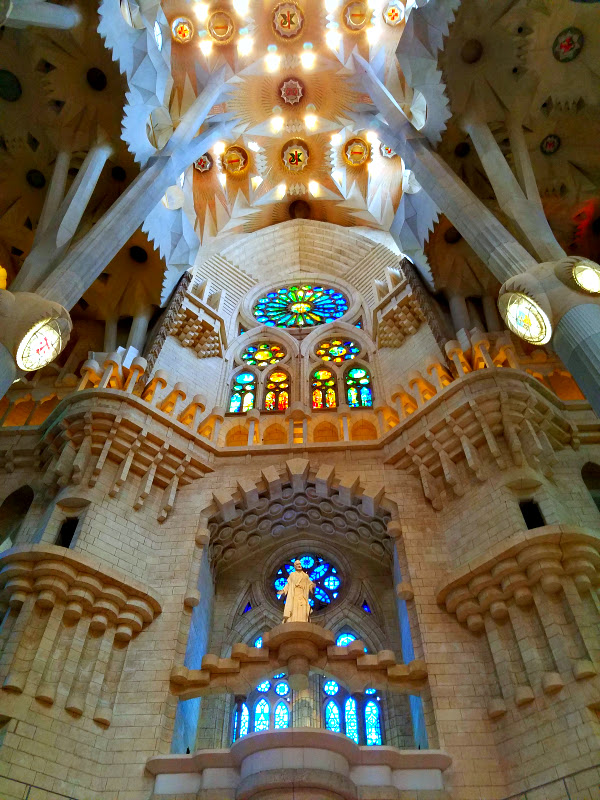
Sagrada-Familia
Don’t forget to buy tickets ahead of time!!!!
Park Güell
Already early in his career Antoni Gaudi met the industrialist Eusebi Güell, who – immediately impressed by Gaudi’s modernist design – commissioned the architect to build various structures bearing his name. Some of the most famous are the Parc Güell, Palau Güell and the Crypt in Colonia Güell, the latter being 23 kilometers outside Barcelona.

Park Guell and view of Barcelona
Parc Güell is one of those spots in Barcelona, where you can escape the hustling and bustling of the city. This is provided you walk a bit further than the entrance, which is one of the most popular parts of the park and thus often pretty crowded. The park – measuring 42.5 acres and built between 1900 and 1914 – is full of beautiful architectural structures designed by Gaudi.
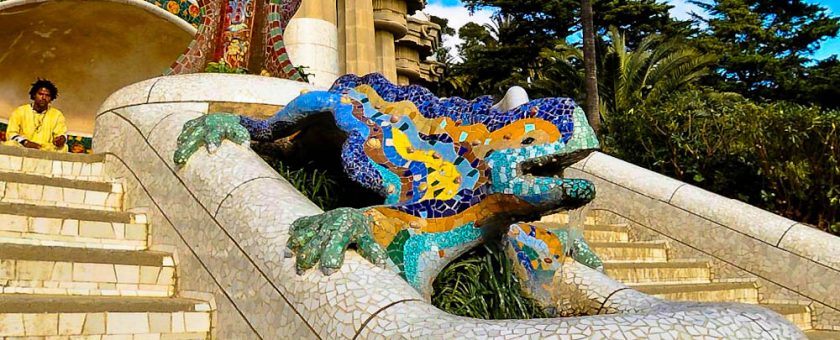
Gaudi-Parc-Guell-Lizard-Barcelona
Some parts are decorated with the colorful mosaics he often used in his work. Other parts are more of a rural shape, totally fitting in with the ambiance of a park. On top of it, from the higher parts of the park you have different, excellent views over the city. For a panoramic view search for the large cross at the high-point of the park.
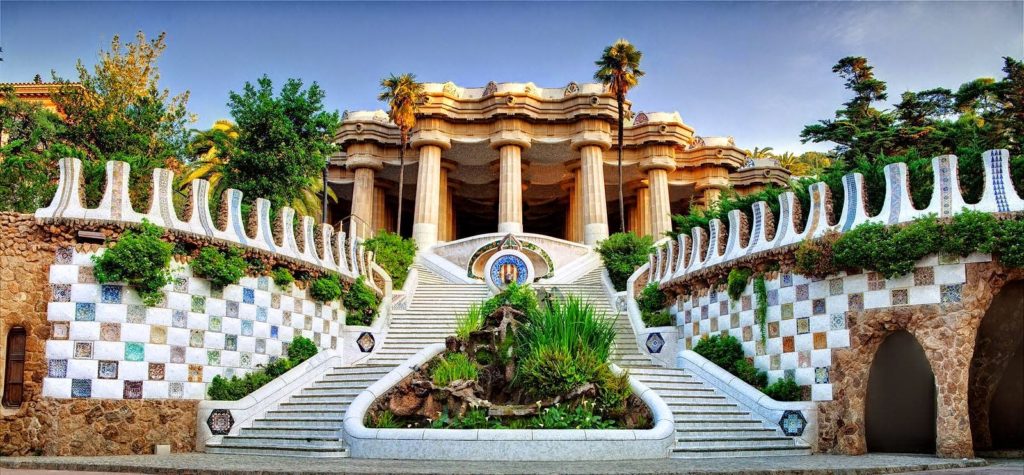
Park-Guell-entrance
In this park you also find the Gaudi House Museum, the house in which Gaudi lived from 1906 until 1926, and which by the way is not designed by him, but does contain furniture designed by the architect himself.
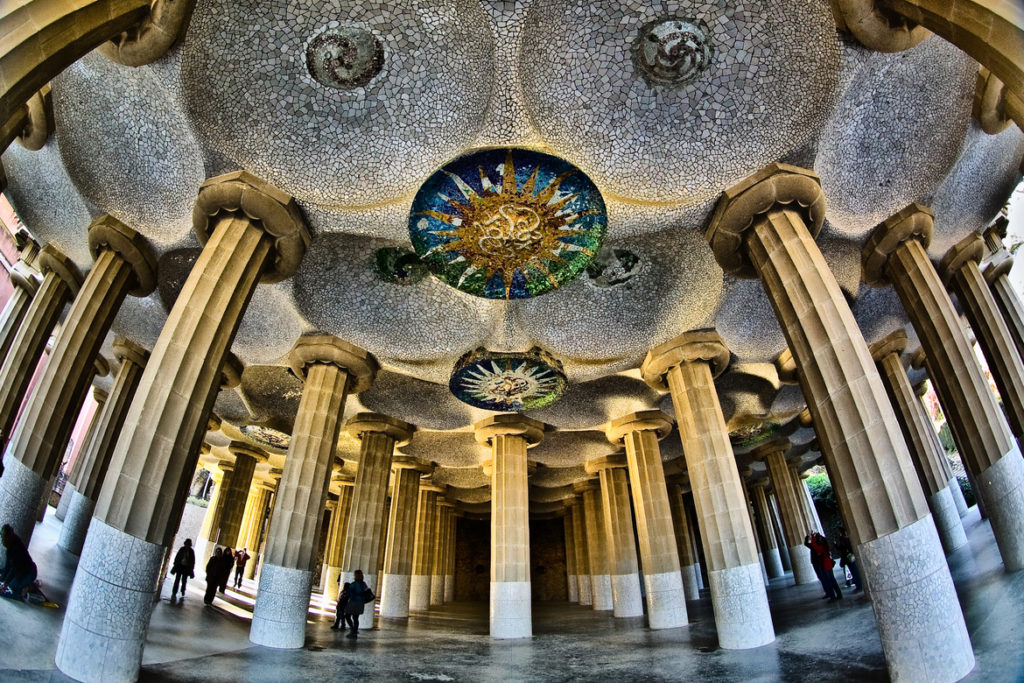
Park-Guell-Barcelona
Entrance to the outer areas of the park is free, but you will have to pay an entrance fee to enter the monumental zone, the main entrance and the parts containing mosaics.
Palau Güell
After having been closed for renovation for several years Palau Güell has opened again completely in 2011, adding an extra destination to our Gaudi Route in Barcelona. Palau Güell was designed and constructed by Gaudi in between 1885 and 1888 as a city palace for his patron and friend Eusebi Güell and is situated in the Raval neighborhood on Carrer Nou de la Rambla (no. 3-5).
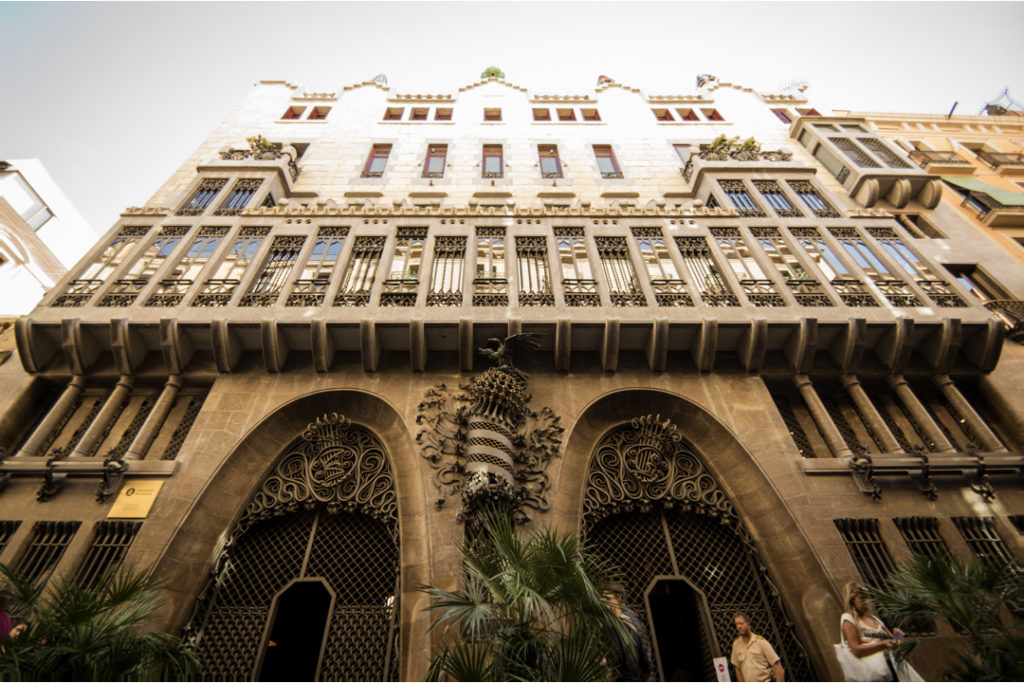
Barcelona-Palau-Guell
Parts of its facade resemble a Venetian palace and the oval portals were the place where guests could enter the mansion with their horse and carriage, after which they would be guided to the upper floors where the family lived. You can see Gaudi’s typical playful design back in the whole building (including its colourful rooftop), its furniture and other ornaments. As the other Gaudi sites in this article Palau Güell is a UNESCO World Heritage Site.
Casa Battló
Casa Battló went through a thorough renovation already at an earlier stage of its existence and thanks to the renovation being commissioned to Gaudi the building has gotten the fame it has today. Casa Battló was built by the architect Emilio Sala Cortés in 1877 and was at that stage a typical classical building without the modernist characteristics we would see applied to it shortly after the turn of the century.
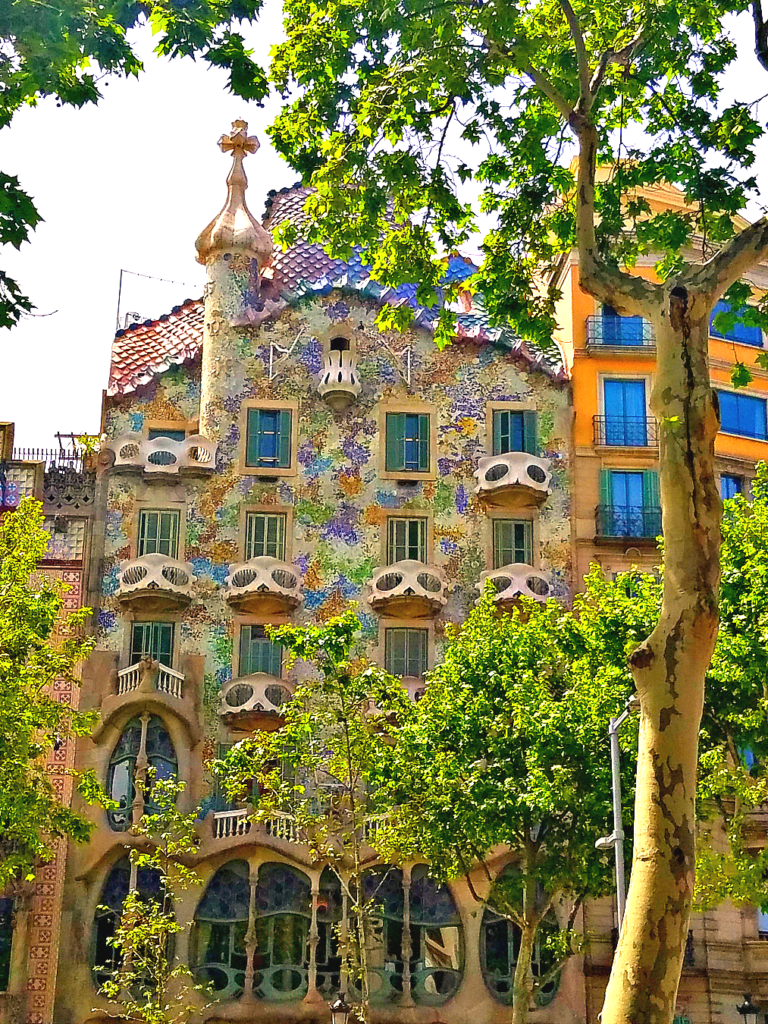
Casa Battló
When the ownership of the building changed in the early 1900s, Gaudi was asked to redo the interior and exterior design, for which he got all creative freedom. Part of the result of this renovation is what we can nowadays see at Passeig de Gràcia number 43. Throughout the years more renovations and refurbishments have taken place. None really affected Gaudi’s stamp on the building though. With nicknames like the house of the bones, the house of the masks and the house of the dragon you can imagine the exterior is quite magnificent, as is the interior.
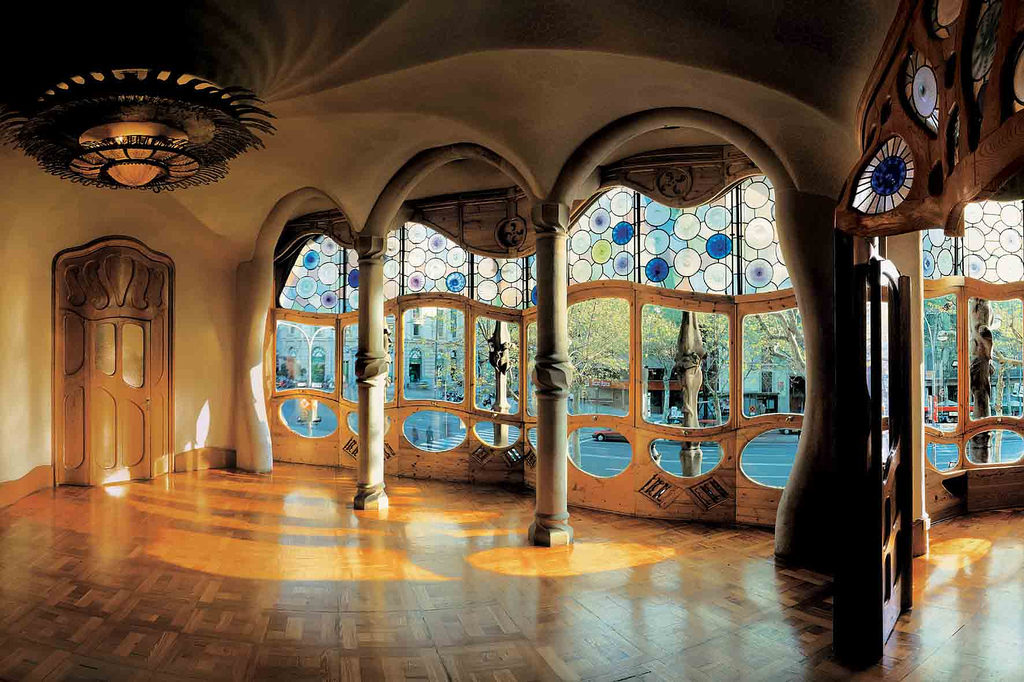
Casa-Battlo-Interior
The 5,000 m2 building is no longer used for housing, instead it is being used for events and since 2002 made accessible for tourists.
Casa Mila (La Pedrera)
Casa Mila, locally more often referred to as La Pedrera (the stone quarry), is one of the other magnificent houses designed by Gaudi along the Passeig de Gracia. This one being located at the corner with Carrer de Provença
(numbers 261-265). It was built by Gaudi for the wealthy family Mila at the height of his career in between 1906 and 1912 and seen as one of this most innovative works in terms of functional, decorative and constructive aspects.
The building consists of two separate buildings, structured around two courtyards, and was meant to be partially a house for the Mila family and partially apartments for rent.
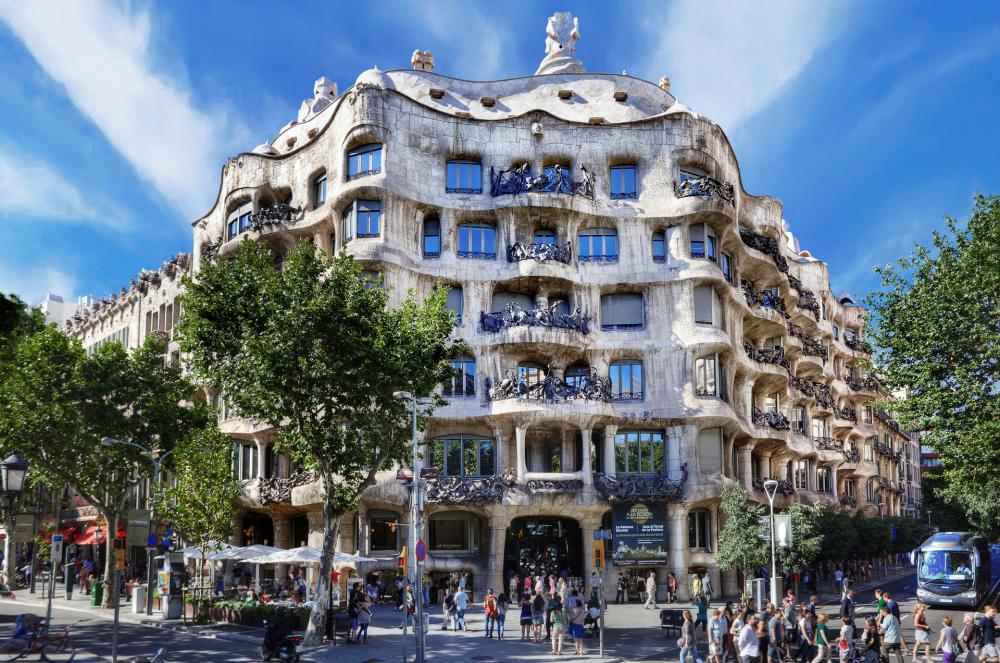
Casa-Mila
Although the roof-terrace was mainly meant to fulfill a functional role, this doesn’t make it less spectacular. Walking around here you’ll note different kind of architectural sculptures, which are functioning as either staircases, chimneys or ventilation towers. The nickname La Pedrera was given to it by locals less happy with the exterior design, which according to some resembled an open quarry. The façade was however pretty innovative for the time it was being built, purely self-supporting, so that any demolition inside the building would not have consequences for the outside. As was common at the modernist time Gaudi also designed furniture for the house, but unfortunately little of it could be saved through the years.
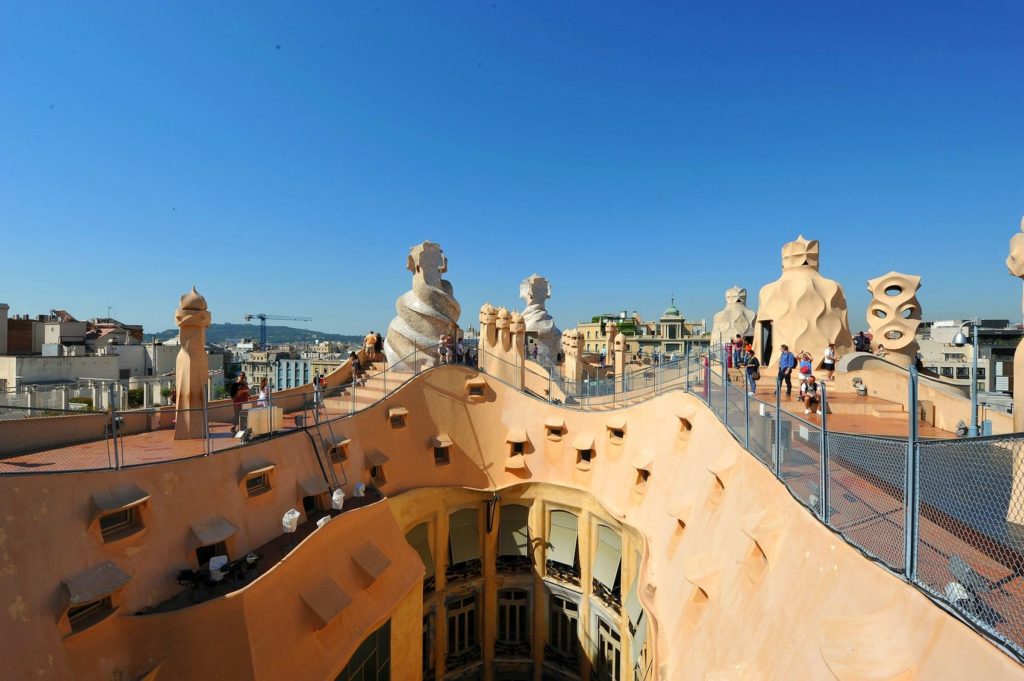
Roof-Casa-Mila
Nowadays Casa Mila besides being a popular architectural attraction also is a cultural centre, where events and art exhibitions take place throughout the year.
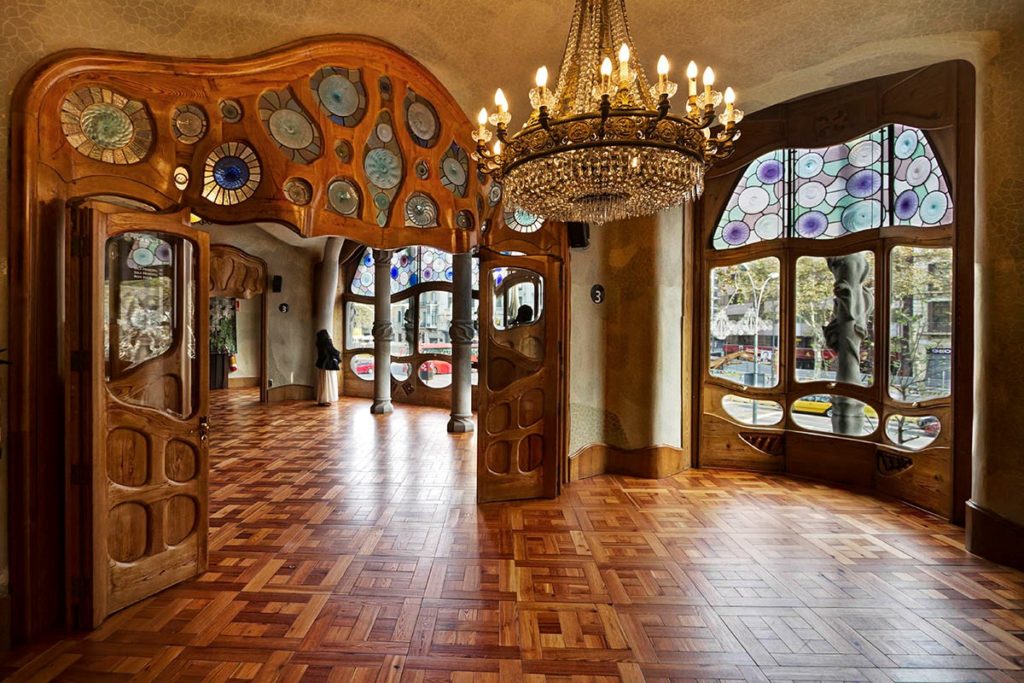
casa-mila-interior
Casa Vicens
Casa Vicens was Gaudi’s first important work and was built as a family house for the Vicens family
in between 1883 and 1889. Characteristic for this house are the Moorish influences and the different patterned tiles. This last detail is thanks to the owner, Mr. Vicens, being the owner of a brick and tile factory.
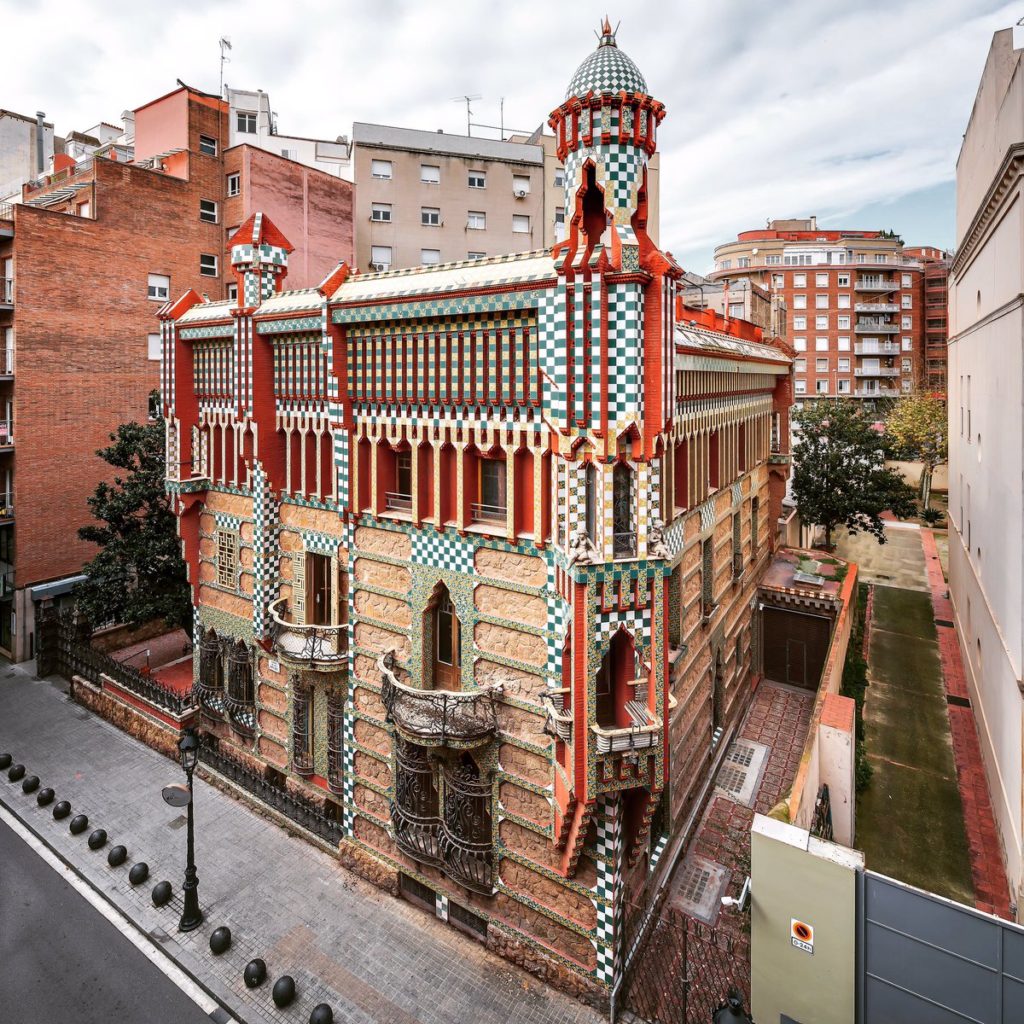
Casa-Vincenza
Besides the Moorish influences you’ll also see oriental influences and the inspiration Gaudi got from the surrounding nature back in the design of the house. Casa Vicens obtained a UNESCO status in 2005. It is located at Carolines, no. 24 in the Gracia district and opened to the public.

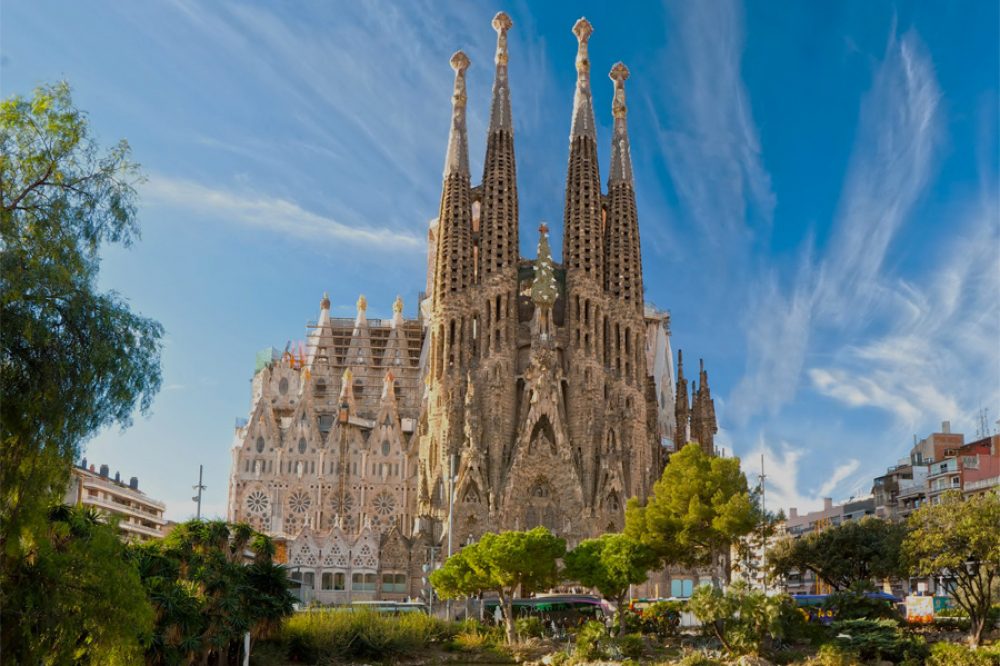
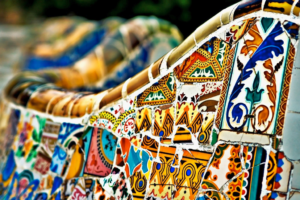 If you have limited time, I suggest you visit at least La Sagrada Familia, followed by a walk around Parc Guell and a visit to one of the mansions in the center and a walk around Parc Guell. Casa Batllo and Casa Mila are most iconic and famous.
If you have limited time, I suggest you visit at least La Sagrada Familia, followed by a walk around Parc Guell and a visit to one of the mansions in the center and a walk around Parc Guell. Casa Batllo and Casa Mila are most iconic and famous.
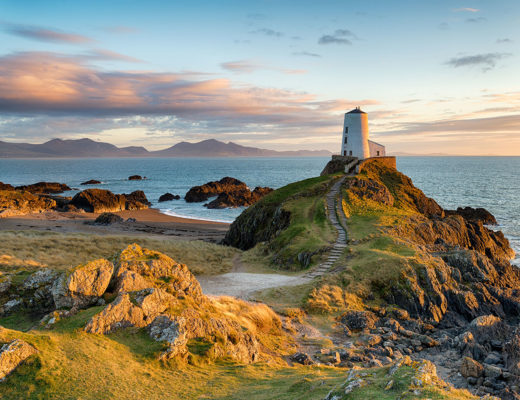

Barcelona, Spain: Beyond Gaudi - PointsTravels
August 13, 2018 at 7:48 pm[…] Towards end of 19th century new form of art and architecture, Modernisme, a variant of Art Nouveau, was born in Barcelona. It became a means of expression for Catalan nationalism and counted Josep Puig i Cadafalch, Lluís Domènech i Montaner and, above all, Antoni Gaudí i Cornet among its major exponents. Barcelona’s Eixample district is full of the highly original buildings that they created for their wealthy clients. To read more about Gaudi’s Barcelona>Click Here! […]